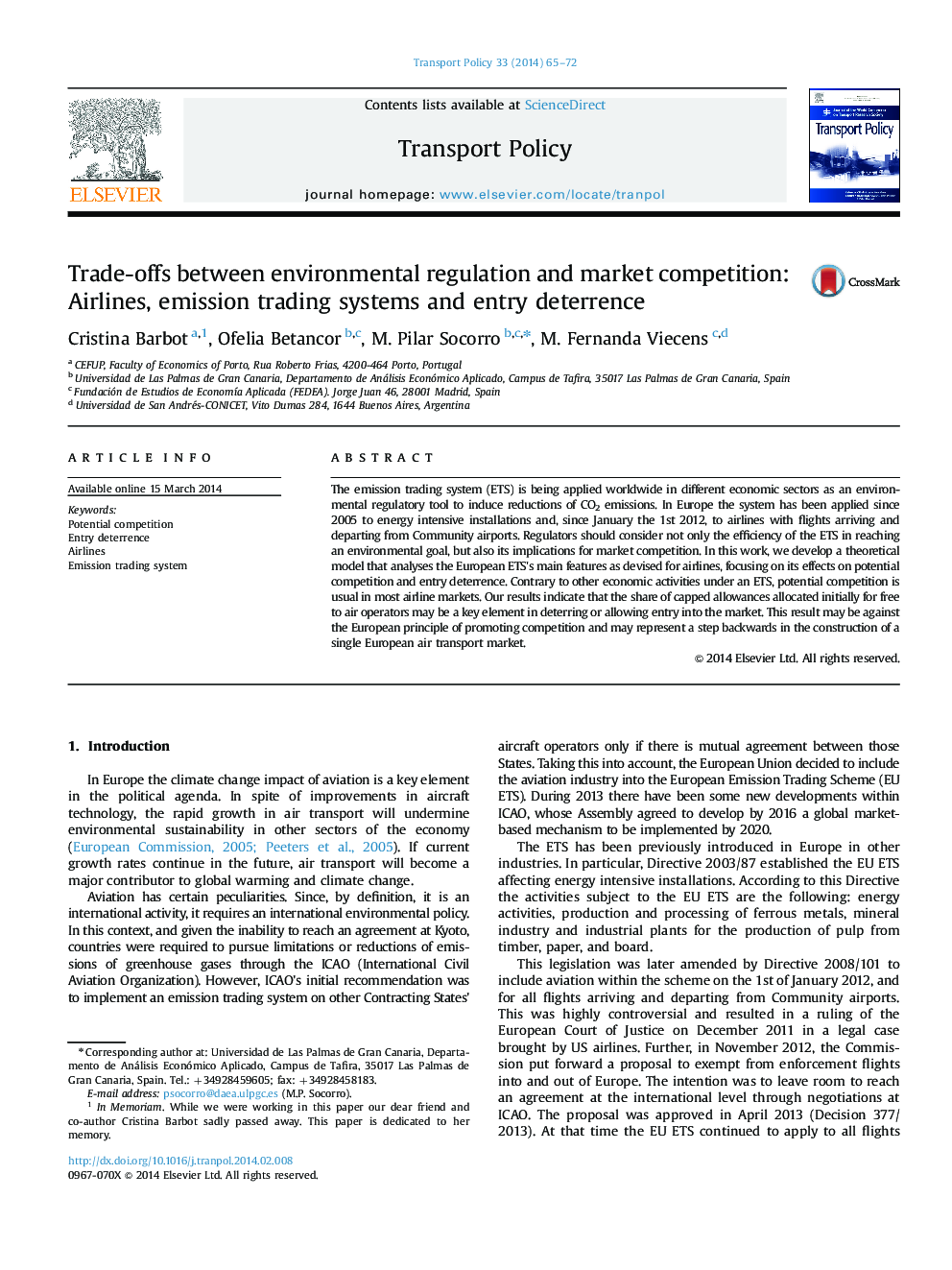| Article ID | Journal | Published Year | Pages | File Type |
|---|---|---|---|---|
| 1064837 | Transport Policy | 2014 | 8 Pages |
•We develop a theoretical model that analyses the European ETS׳s main features.•EU ETS may result in entry deterrence affecting competition and social welfare.•The conditions for blocked, deterred or accommodated entry are analyzed.•The share of capped allowances allocated for free to air operators may be crucial.
The emission trading system (ETS) is being applied worldwide in different economic sectors as an environmental regulatory tool to induce reductions of CO2 emissions. In Europe the system has been applied since 2005 to energy intensive installations and, since January the 1st 2012, to airlines with flights arriving and departing from Community airports. Regulators should consider not only the efficiency of the ETS in reaching an environmental goal, but also its implications for market competition. In this work, we develop a theoretical model that analyses the European ETS׳s main features as devised for airlines, focusing on its effects on potential competition and entry deterrence. Contrary to other economic activities under an ETS, potential competition is usual in most airline markets. Our results indicate that the share of capped allowances allocated initially for free to air operators may be a key element in deterring or allowing entry into the market. This result may be against the European principle of promoting competition and may represent a step backwards in the construction of a single European air transport market.
